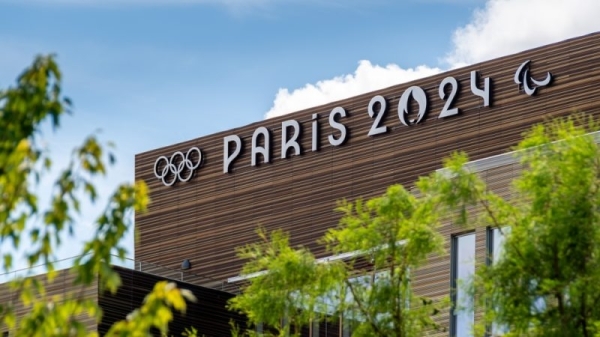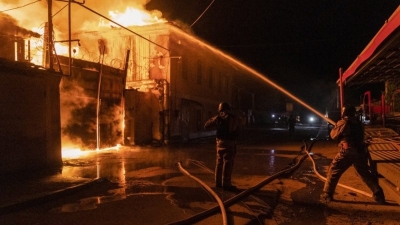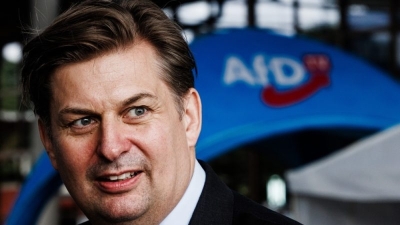Climate friendly Paris Olympic Games focused on low carbon, repurposed construction

The Paris Olympic Games have opted for low-carbon construction and the repurposing of existing facilities for its sports infrastructure. The target is to produce half the emissions of the Rio and London games.
The organisers aim to meet limits set by the climate agreements signed in Paris in 2015 at COP21. The WWF, with which the Olympic Committee signed an agreement in 2016, is keeping a close eye on the situation.
To achieve this goal, the Olympic Committee has opted for several innovations, particularly in terms of buildings.
The best way to avoid carbon emissions is not to build new infrastructures. As in the United Kingdom in 2012, 95% of the event spaces will be existing facilities. This does not preclude a few modifications, such as at the Marina of Marseille in the south of France, which will host the Olympic sailing events.
Just a few of the new infrastructures will have to be entirely built and maintained after the Games, the Olympic aquatic centre and the Olympic Village for example, which will house athletes and staff just outside Paris, and the arena in the heart of the city.
Fit for 2050 Olympic Village
The Olympic Village, the centrepiece of the Games, will be used to test several innovations which, in all likelihood, will be needed to adapt buildings to the climate in Paris in 2050, a climate equivalent to the current summer climate of Seville.
“We set ourselves the goal of being ten years ahead of the regulatory targets aimed at putting the city and building sectors on the road to carbon neutrality by 2050,” explains Antoine du Souich, Solideo’s Director of Strategy and Innovation, in Les Echos.
To achieve this, the builders focused on using wooden structures for buildings under 28 metres in height – beyond which, safety regulations prohibit the use of wood for the structure.
The concrete used was ‘low-carbon’, even ‘very low-carbon’, with prefabricated concrete slabs incorporating bio-sourced materials, the builder explained. For building interiors: wooden floors, cardboard bed bases, etc. Innovations abound.
It should be noted that there is currently no agreed definition of ‘low-carbon’ concrete. The environmental benefits of unconventional concrete are difficult to assess precisely.
In addition, the district’s buildings and roads are equipped with rainwater recovery and use systems, as well as outdoor air treatment systems.
Ultimately, “The accumulation of innovative approaches in the Athletes’ Village has made it possible to reduce the carbon footprint of the construction process by 50% compared to a conventional scenario,” French Ecology Minister Christophe Béchu noted.
The site’s rubble will also be removed by river, avoiding the need for tens of thousands of return truck journeys. At the same time, 75% of this material will be reused.
The concave Olympic swimming pool
Just outside Paris, French President Emmanuel Macron inaugurated the Olympic aquatic centre in Saint-Denis, not far from the Stade de France, with significant fanfare on 4 April.
Featuring a 5,000 m2 concave roof, the architects gave it an original appearance and an ecological raison d’être, reducing the internal space to be heated by the neighbouring data centres.
It also houses enough solar panels to meet its electricity needs. While the framework is made of wood, the seats in the bleachers are made of recycled plastic.
The first arena
Paris has never before had an arena of this scale. “The building is not entirely decarbonized because that’s impossible. To reach that goal, you have to… not build. But the Arena La Chapelle has reduced its carbon footprint by 30% to 50% compared with comparable infrastructures,” said project manager Christophe Rosa in Libération.
As at the aquatic centre, the seats will be made of recycled plastic. The 100% wood frame is supported by walls, some of which are made of raw earth bricks, a material that can restore heat and cold. Insulation is provided by cotton. The building’s recycled aluminium surfaces will be 80% planted.
What’s more, the enclosure will filter the air from the 200,000 vehicles that pass daily under the stretch of ring road adjacent to the Arena, not to mention the geothermal station designed to meet the building’s heating and cooling needs, as well as those of other infrastructures, such as the Louvre museum.
It’s a building that’s ahead of the rules,” Antoine du Souich, Director of Strategy and Innovation at Solideo, the public body responsible for building the Olympic infrastructure, explained in Libération. It prefigures not just urban renewal, but also the energy renewal and environmental excellence that will make the city of 2030,” he added.
In short, these OG are a life-size test for a number of innovations designed to adapt cities to Europe’s future climate, and the Paris Games will set the standard for future editions of the world’s biggest sporting event.
[By Paul Messad I Edited by Brian Maguire | Euractiv’s Advocacy Lab ]
Read more with Euractiv




